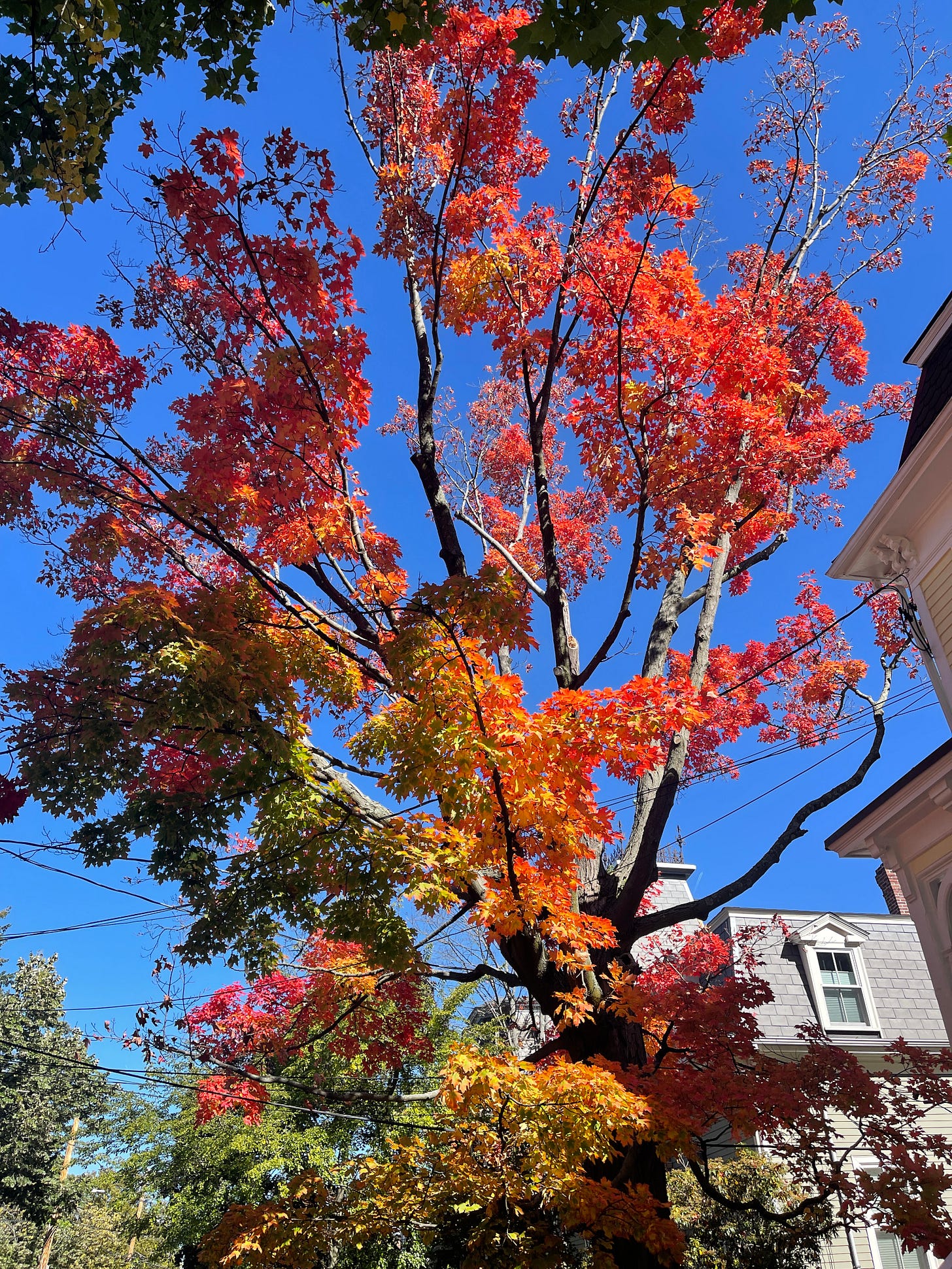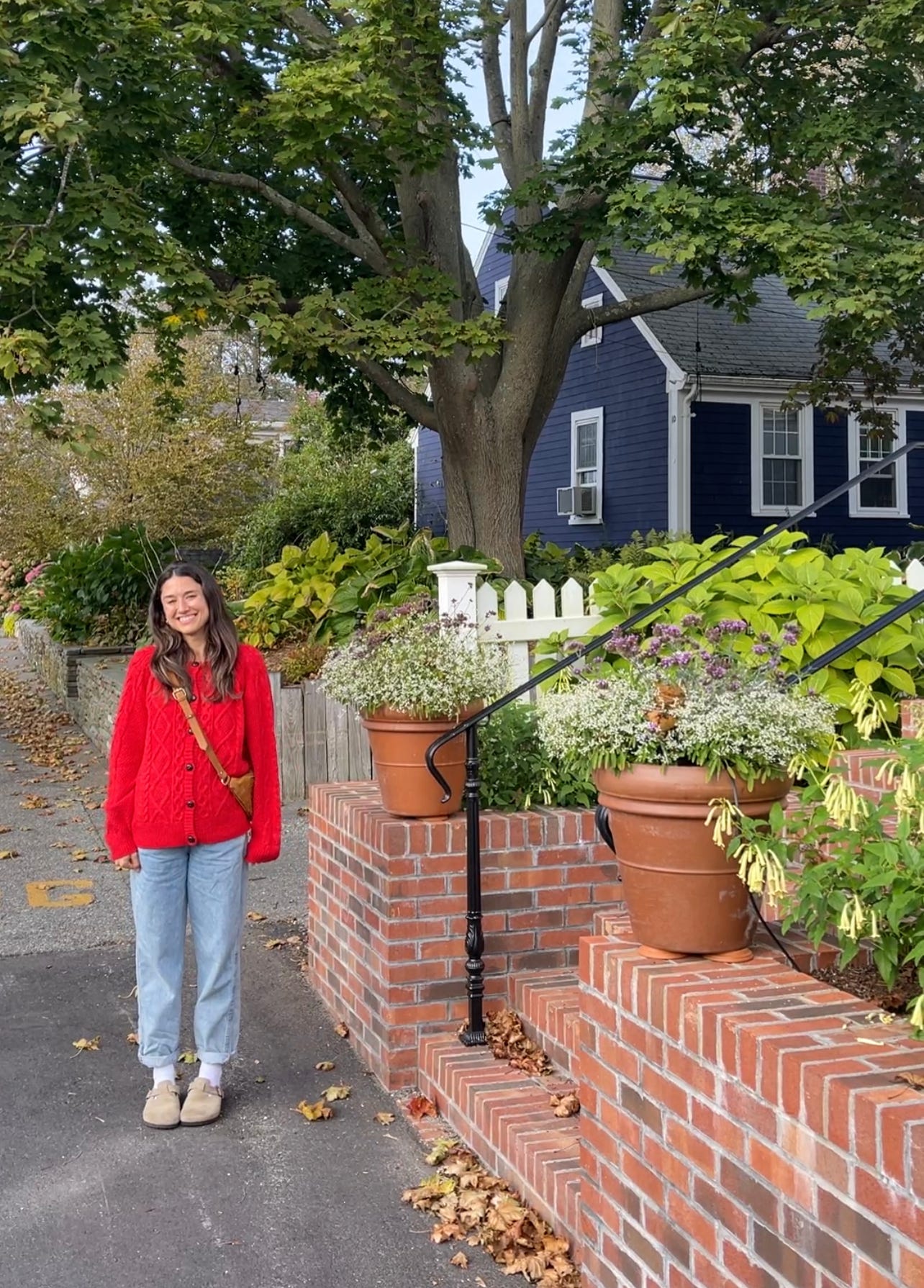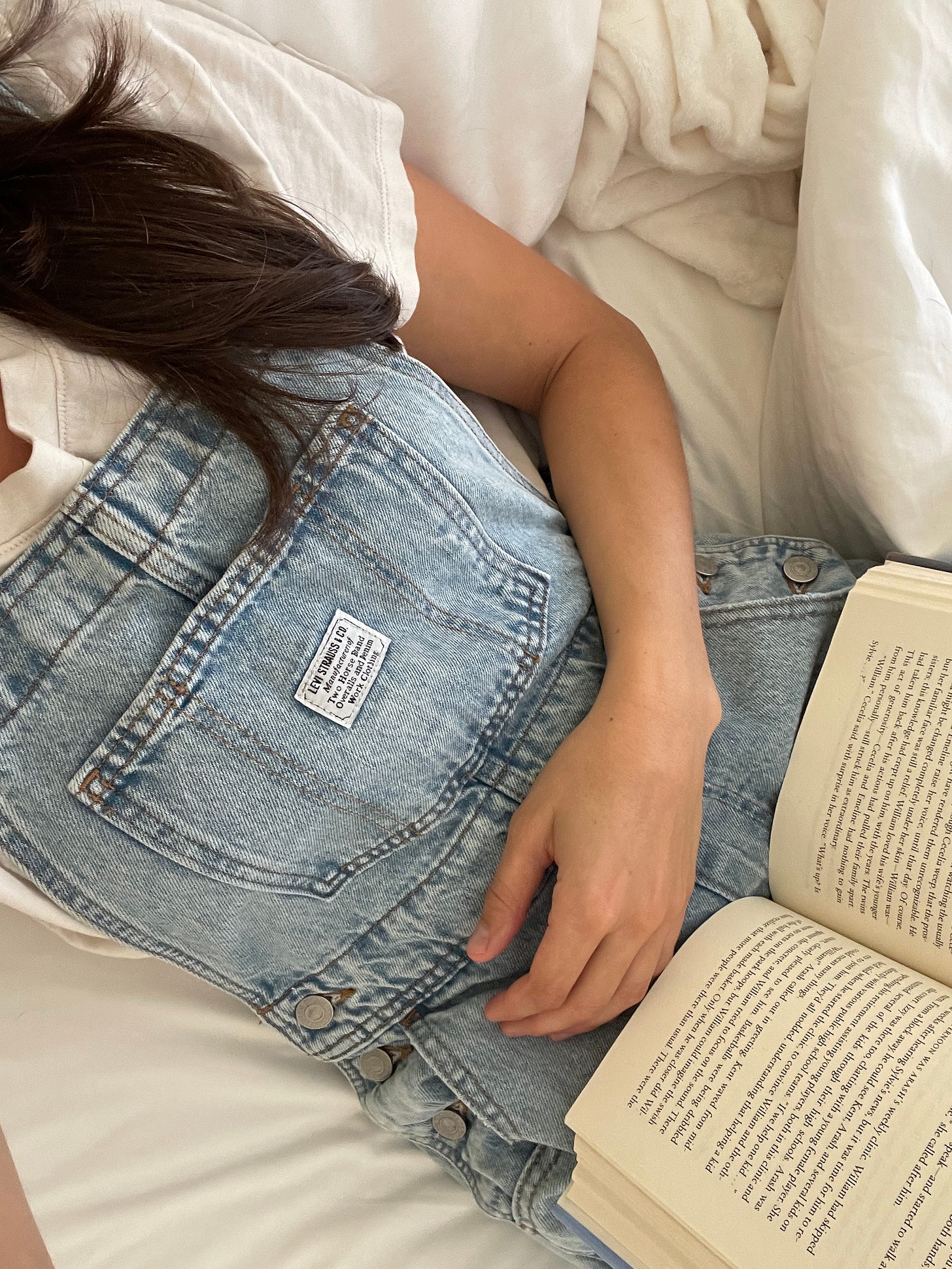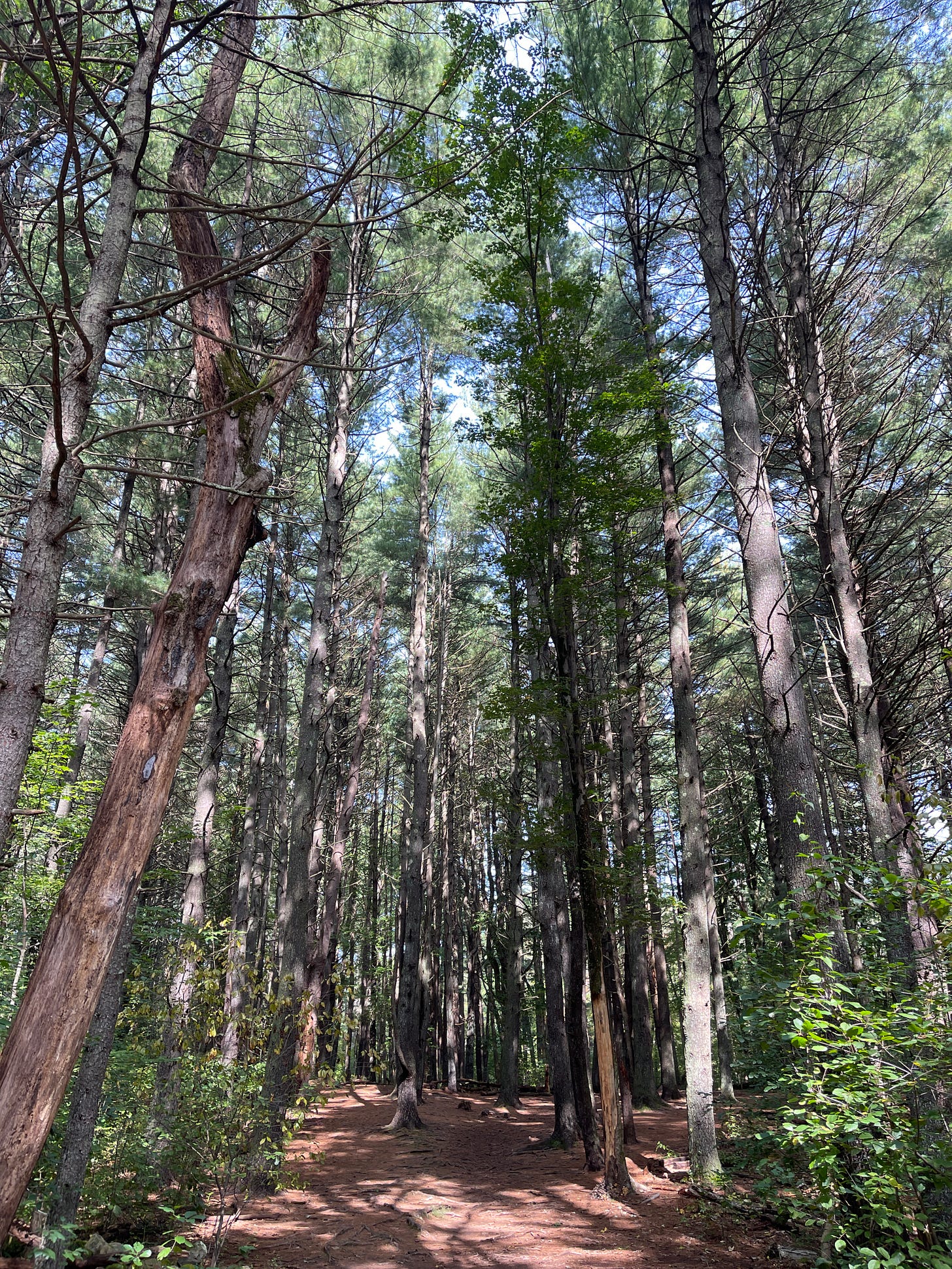I wrote the intro and part of this post a few weeks ago prior to the violence and devastation happening in Israel and Palestine. It has been a horrifically heavy week for many. So much pain and unrest.
While this post was originally about finding comfort during cold seasons, it holds metaphorical resonance. The past week was downright awful, and perhaps unironically aligned with global mental health day. I hope the newsletter this evening, therefore, serves to offer solace and comfort during an otherwise extremely trying time.
Here goes.
I feel the way about autumn that I do about avocados. Everything is splendid for what feels like a 48 hour period - the leaves, the cooler temps, the candles, the sweaters.
And then the magic dampens and I’m thrust into a seasonal depression for the span of November-March. I know winter is technically comprised of a 3 month span, but if you’re from the northeast region, it typically feels more like 6 months.
Sure there are wonderful, Hallmark movie characteristics of autumn, though I don’t want to gaslight this season. For some it is cozy, for others it is cruel.
As a true New Englander, I claim to love the seasons. Though I realized the reason I feel so vibrant during the warmer months is because of the dearth of winter, and I grew tired of that attitude. I only started loving the cooler seasons more when I actually leaned in to change, rather than desperately clinging to the last rays of summer.
Last year, I read both Wintering by Katherine May and The Little Book of Hygge by Meik Wiking (I actually listened to them both and you can get the free audiobooks on Libby. If I’m purchasing a book, ).
They both entirely shifted my perspective and emphasized the power of rest during darker months. I don’t think the lessons learned here have to be dedicated to just one season. I think the larger metaphor fits, and some of the tenets I learned can apply to any season of life that feels a bit more damp, regardless of temperature or climate.
The reason I’m sharing this now is because we may currently feel motivated to perform some of the below actions, to lean into the joy and whimsy of the season. If we can make these a habit now, they may add a bit of warmth and color to winter, well prepared for the cooling before the thawing.
Here are some things I learned, some items I’m loving, and how I’m leaning into coziness and hygge (a Danish concept that embodies comfortable cheer, contentment and wellbeing).
In our relentlessly busy contemporary world, we are forever trying to defer the onset of winter. We don’t ever dare to feel its full bite, and we don’t dare to show the way that it ravages us. An occasional sharp wintering would do us good. We must stop believing that these times in our lives are somehow silly, a failure, a lack of willpower. We must stop trying to ignore them or dispose of them. They are real, and they are asking something of us. We must learn to invite the winter in. We may never choose to winter, but we can choose how.”
- Katherine May, Wintering
This post may seem like an over-glamorization of wintering; that is not the intention. Wintering can feel dark and it can feel anything but cute and cozy. The hope is to instead offer some words and actions that provide a bit of light - tools to try during darker times.
I recently read Dopamine Nation by Anna Lembke and it got me thinking a lot about neurotransmitters, in that there are certain things and behaviors that are conducive to craving and wanting more and more. Never having or being enough.
Speaking to this, May notes in her book,
“In the depths of our winters, we are all wolfish. We want in the archaic sense of the word, as if we are lacking something and need to absorb it in order to be whole again. These wants are often astonishingly inaccurate: drugs and alcohol; poison instead of reintegration; relationships with people who do not make us feel safe or loved; objects that we do not need, cannot afford, which hang around our necks like albatrosses of debt long after the yearning for them has passed.
Underneath this chaos and clutter lies a longing for more elemental things - love, beauty, comfort, a short spell of oblivion once in awhile. Everyday life is so often isolated, dreary, and lonely. A little craving is understandable. A little craving might actually be a rallying cry of survival.”
Hygge is all about having just enough. Warmth, fullness, good food, candles, fireplaces, and blankets are synonymous with hygge.
Though the concept of hygge is not just a thing. It is an action, a verb.
According to May, “[hygge] represents coziness as a kind of mindful practice, a turning towards domesticated comfort to console us against the harshness of the outside world… full of candles and tea, judicious quantities of cake, warm jumpers, chunky socks, plenty of time snuggling alone by a lit fire.”
Wiking’s definition is similar is his book, The Little Book of Hygge. The way to hygge is to turn down the lights, turn off screens, do things that ignite pleasure, lean on the power of community (“we” over “me”), practice gratitude, self-kindness and compassion, get comfy, and celebrate togetherness.
Instant hygge: candles and dim lighting
If there’s one easy and immediate way to lean into the season, it’s lighting. Danes are notorious for lighting candles. And not just one candle, COPIOUS candles. According to The Little Book of Hygge, 28% of Danes are lighting candles every day, oftentimes more than 5 candles at at a time.
I’m personally loving this Wood Cabin candle by Keap. I also love that they offer this more affordable sampler kit. I adore Foresbound candles, too.
If you’re worried about the fire hazard, changing the lamp lighting is also helpful - the dimmer the better. Try to steer clear of overhead lighting. Per the book, aiming for ~1800K of light hits the coziness factor. Typically several smaller lamps throughout the room create more relaxing lighting than one large lamp set in the ceiling. Creating small caves of light around the room is key. You can also try putting light diffuser covers over bright lighting. Or just put a light blanket/cloth (white or a soothing color like deep oranges or pinks) to put over the lamp.
Grab a sweater and comfy socks
Casual and uncomplicated is the name of the game. As is layers. Break out the fall/winter clothing and/or put wool socks on your wishlist. The Danes are famous for cozy socks. Seems simple but sometimes when feeling cold, the easiest place to start is with the feet. Does this officially catapult me into the category of foot fetishization on Substack? I pray not, though I am very passionate about a good pair of socks. ESPECIALLY when right out of the dryer. If you’re having an absolutely awful day, I’d highly recommend putting socks in the dryer and then placing them on your feet. Idk just something so nourishing about it.
Hot drinks
Hot drinks are what 86% of Danes associated with hygge, according to the book. Coffee, tea, hot chocolate - anything! And honestly any food or drink that creates a warming effect. People in Denmark and Scandinavian countries are also known for cakes and baked goods, though they’re often making them at home from scratch. And really leaning into the process of making them, while being totally enraptured and mindful when consuming.
Lean into slow
“The longer a dish takes to make, the more hygge it is,” Wiking notes. Often cakes and stews will take hours to make, and it’s a very mindful process. The consuming of these products is equally slow, savoring the tastes, textures, and temperatures. Savoring rather than rushing through, especially given the amount of time and effort that went into preparing it.
May also notes a similar slowing down in her book. “Winter is the time for the quiet arts of making, for knitting and sewing, baking and simmering, repairing and restoring our homes.”
Get sunlight when you can
Outdoor time is lovely in the warmer months, though a hellscape during damp, dark, and dreary times. And yet Danes are found on their bikes all year round. Getting some sun exposure is not only helpful for mood, but also keeping circadian rhythms even and steady. This is most ideal for 15-20 minutes before 10 am. A light lamp may also help.
Bring nature inside
Danes embody minimalist design that emphasizes natural colors and textures, rooted in wood, leaves, nuts, and plants.
I love May’s note of nature in her book as well. “Nature shows that survival is a practice. Sometimes it flourishes - garlands itself in leaves, makes abundance of honey - and sometimes it pares back to the very basics of existence in order to keep living. It doesn’t do this once, restfully, assuming that one day it will get things right and everything will smooth out. It winters in cycles, again and again, forever and ever. It attends to this work each and every day. For plants and animals, winter is part of the job. The same is true for humans.”
Perhaps bringing some nature inside, even in the dearth of frigid cold, is a nice reminder that nature never hurries, and the slowing down is just part of the job.
Lean in
Okay this one isn’t in the book or mentioned in Wintering, but when listening to the scarf season playlist on Spotify this week, I was struck with the realization that I think I have entered Swiftie territory. I resisted for so long because it felt like a personality trait, but damn the music is perfect for fall.
And on that note, Uggs are back and trendy again. Whatever makes you happy about fall, do it unapologetically. Pumpkin spice? Cool. Apple picking? Amazing. Re-watching your favorite cringe TV series? LOVELY.
I compiled a list of cozy and comforting fall movies, and you can find that here.
Grab your favorite book
I was noting earlier this week that I wish Goodreads had a happiness/depression scale when reviewing a book. That way I could tell immediately if a book was going to ruin me or not.
Apparently StoryGraph does this? Someone told me that this week and I think I’ll try it out; updates to follow.
If I were to compile a list of books that feel oh so good, it probably look something like the following:
Everything I Know about Love by Dolly Alderton
The House in the Cerulean Sea by TJ Kline
Maybe You Should Talk to Someone by Lori Gottlieb
The Guncle by Steven Rowley
Little Weirds by Jenny Slate
Lessons in Chemistry by Bonnie Camus
Wintering by Katherine May
Dear Girls by Ali Wong
Black Cake by Charmaine Wilkerson
Taste by Stanley Tucci
Romantic Comedy by Curtis Sittenfeld
Book Lovers by Emily Henry
Why Not Me? by Mindy Kaling
Try not to isolate
When the weather gets colder, all I want to do is get home from work, bury myself under a weighted blanket, and stay indoors. Though the concept of hygge is not at all about isolation. It’s about spending time with others that is warm, relaxed, friendly, and welcoming. It doesn’t have to be a huge group, especially if you’re introverted. A relaxing and cozy night can be had with a couple of friends, rather than a large party.
We have a basic need to feel connected with others. Close, caring bonds with other people play a major part in motivation and behavior.
And maybe it’s not only about happy times, either. Maybe it’s brave honesty to share with a friend how you’re really doing.
I love May’s approach to not just ‘gritting it out.’ But rather, to invite loved ones into how we’re feeling.
“Sometimes the best response to our howls of anguish is the honest one. We need friends who wince along with our pain, who tolerate our gloom, and who allow us to be weak for awhile when we’re finding our feet again. We need people who acknowledge that we can’t always hang on. That sometimes everything breaks.”
And when this happens, when you feel like you’ve been in the shadows for a bit, that’s okay too.
May writes,
“We may drift through years in which we feel like a negative presence in the world, but we are capable of coming back again. We can return to friends and family not only restored but capable of bringing more than we brought before: greater wisdom, more compassion, and increased capacity to read deep into our roots and know that we will find water…we flourish on caring, on doling out love. The most helpless members of our families and communities are what stick us together. It’s how we thrive. Our winters are social glue.”
Hygge as social support
Policies matter and often the Scandinavian countries have high levels of happiness because of good work-life balance. The policies secure Danes with time to pursue meaningful relationships, and the colloquial language drives Danes to prioritize spending time with family and friends, developing quality relationships over time.
While it may seem fruitless at this point in our history, it is important to name. Because it makes all of the above methods of self-care really challenging, especially when you don’t have the time or access to practice them on a regular basis.
Make it affordable
The point of hygge isn’t to spend. It’s to pause and savor what you already have. Perhaps play a board game, have a pantry party (make a meal out of what you already have in the pantry or swap items with a neighbor), have a TV night, set up a library among friends - anything that makes you feel good without excessive spending.
Conserve
I know this post mentions a few links and items to buy. But perhaps my favorite tenet of hygge is the act of conserving. The goal is to save and make a purchase special. That way, a memory gets attached to it, rather than any old purchase. You want to be reminded of the ‘why’ every time you use the product.
Gratitude
During times of winter, it’s challenging to maintain any glimmer of hope and positivity. This is why most of what is underlying all of the above interventions is unconditional positive regard to and for ourselves.
As May so poignantly says, “…we need to perform those functions for ourselves: to give ourselves a break when we need it and to be kind. To find our own grit, in our own time.”
Sometimes it’s just putting one foot in front of the other. May says, “…we can only deal with what’s in front of us at this moment in time. We take the next necessary action, and the next. At some point along the line, that next action will feel joyful again.”
Make a hygge emergency kit
Sometimes it’s nice to have a little area that is home to all of your favorite things to use in case of emergency. Some ideas: candles, your favorite tea, honey, a book or highlighted passages from a book, your favorite film or TV series, jam, a good pair of woolen socks, chocolate or another snack you can savor, a selection of your favorite letters, a warm sweater, a notebook, a pen, a blanket, music, a playlist, a podcast episode, a photo album or some photos. Honestly, anything to get the senses going to get you out of your head and back into your body.
Or if you know someone who is in a season of winter, consider making them a care package using hygge tenets.
To end, I’d like to again quote May. And if at this point you’re still wondering if you should get this book, THIS IS A FERVENT REQUEST THAT YOU DO.
“It often seems easier to stay in winter, burrowed down into our hibernation nests, away from the glare of the sun. But we are brave, and the new world awaits us, gleaming and green, alive with the beat of wings. And besides, we have a kind of gospel to tell now, and a duty to share it. We, who have wintered, have learned some things. We sing it out like birds. We let our voices fill the air.”
And if you’re not yet ready to sing, know that you are important, loved, and that you deeply matter.
If you or a loved one are ever in need of immediate mental health attention, below are some resources.
Call or text 988 or chat 988lifeline.org
Text MHA to 741741 to connect with a trained Crisis Counselor from Crisis Text Line
Call 911 or go to the nearest emergency room.
Take good care, of yourself and others, the best you can.
Warmly (even when wintering),
Katie









